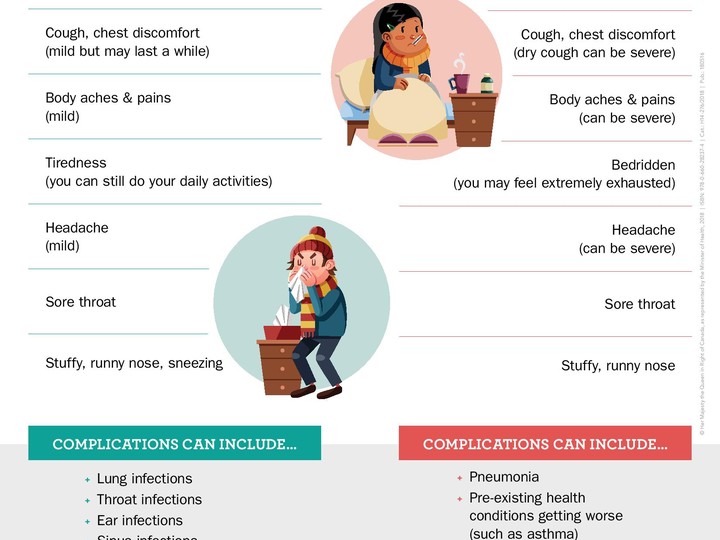as canada braces for a second wave of covid-19 infections, cold and flu season adds an extra complication. if you’re feeling under the weather, how do you know if it’s the coronavirus, influenza, or just a pesky autumn cold?first off, it’s always a good idea to reach out to your doctor or local health service if you have concerns. health canada also has a
self-assessment tool to help you distinguish between the symptoms of a cold or flu versus the dreaded coronavirus.here’s how you can spot the differences.
the seasons
coronavirus can strike any time of the year. at the very start of pandemic, some officials expressed a hope that infections might slow down amid hotter weather. however, it’s clear that covid-19 doesn’t disappear in sunshine and heat given the
spikes in infections seen in southern and western states of the united states in july.despite its name, you can get the seasonal flu at any time of the year
according to the centers for disease control. flu season, when cases peak, generally starts in the fall, peaks in winter, and continues into april or even may in the northern hemisphere. scientific american
points out that the “usual pattern” starts with children coming down with the flu first, then adults. however, it’s worth noting that there are no hard and fast timeframes. infection prevention and control canada
says the 2019-2020 flu season in canada started on august 25, 2019. and in case you are curious about canada’s current flu infection numbers, the government tracks
cases.and then there’s the cold. the cdc
notes that while many different viruses can lead to the common cold, rhinoviruses are the most common. as anyone who has suffered through a cold amid a heatwave can attest, you can catch a cold at any time of the year. however, a study published in the journal of infectious diseases
says infections tend to peak in early fall, “usually september to november, and again in the spring from march to may.”feel free to read more about the individual symptoms and complications of the
common cold,
influenza and the
coronavirus.
cold versus flu
it’s easy to confuse the two, though the flu typically comes with more severe symptoms. health canada has a
handy comparison guide. generally speaking, cold symptoms tend to build up slowly while symptoms for the flu can appear more quickly.
what do the cold and flu have in common?
if you’re suffering from a cold or the flu, you might experience cough, chest discomfort, aches and pains, headache, tiredness, a sore throat, and a stuffy, or runny nose. the difference lies in the intensity of the symptoms. health canada
notes that while a cold may make you feel tired, you might be entirely bedridden with the flu. headache, body pains and cough may also be much more severe with flu, compared to the common cold. health canada also indicates that while it’s common to feel chills when you have a cold, a fever is rare. fever appears to be a more likely symptom of the flu.
 4 minute read
4 minute read









